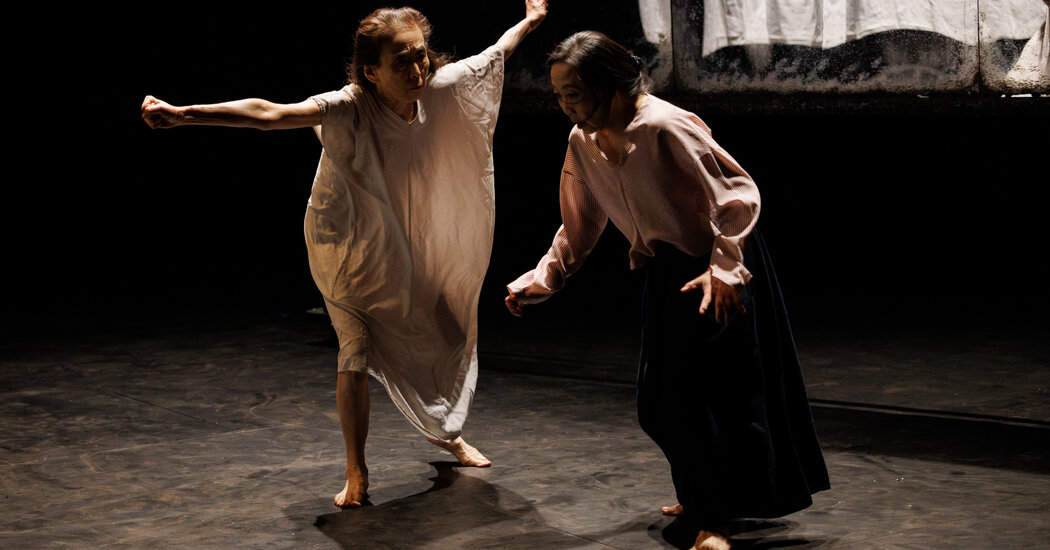What is war? That is the question of a fortunate child, a query more easily answerable than “Why is there war?” or “What is it good for?” The question asked in “What Is War,” a performance by Eiko Otake and Wen Hui, is a little more pointed: What is war to them?
Otake was born in Japan in 1952; Hui in China, in 1960. In a video introduction to the hourlong work, which had its New York premiere at the Brooklyn Academy of Music on Tuesday, Hui asks, “What is the war?” and that definite article is telling. The war they mean is the Second World War, the war of their parents and grandparents.
In one monologue, Hui tells us that she never met her grandmother, who died when Japanese planes bombed her hometown, Kunming, in 1941. In another speech, Otake relates how her father survived the war by pretending that he had tuberculosis.
The dark wartime history of Japan and China hangs over the work and between these two longtime friends. In a video projected on the back wall of the stage, the two women visit the site of a so-called “comfort station” in Nanjing, China, where the Japanese Army forced Chinese and Korean women into sexual slavery.
The wartime history of the United States and Japan feeds in as well. In a monologue, Otake tells us how her mother revealed to her only late in life that she had been present during the American bombing of Tokyo in 1945, when 100,000 people were killed. Otake’s mother, then 19, watched her house burn while holding her grandfather’s hand.
This is potent material, but “What Is War” doesn’t quite ignite it. A big part of the problem is language. Otake’s and Hui’s English is sometimes hard to understand, and their lack of fluency makes the speeches tentative and flat. Otake inflects the speeches, both hers and Hui’s, with her always expressive body language — clawing at herself, crumpling — but this serves to highlight the verbal weakness.
Silent sections, alternating with the speeches, are much more resonant. Near the start, the two women stand on opposite sides of the stage, facing each other along a strip of dirt. Slowly, slowly, they advance until, just before collision, Otake swerves, watching as the shell-shocked-seeming Hui continues past her, unaware.
But the hard-to-imagine horror of the subject largely thwarts these powerful artists. After Hui recalls seeing the mangled bodies of wounded soldiers when she was a child during a war between China and Vietnam, Otake speaks of an older friend who was a survivor of the atomic bomb in Nagasaki and told her about “bodies without outlines.” In the silent duet that follows, the two women tangle, and their outlines merely merge rather than melt away.
Those two bodies are exposed by the end, entirely naked. The women write on each other’s skin in Chinese and Japanese characters while speaking in those languages. Audience members who don’t know the languages learn later that Hui is writing a letter to the grandmother she never met and that Otake is transcribing the part of the American-written Japanese Constitution that renounces war.
As the two women climb up the aisles of the raked audience seating, Otake tells us that her Nagasaki-witnessing friend pledged to cry out like an animal on her last day of life. Otake says she will do the same, which is easy to believe, but that animal cry is mostly missing from “What Is War.”
What Is War
Through Saturday at the Brooklyn Academy of Music, bam.org.
The post Review: Bodily Traces of War, Expressed Through Dance appeared first on New York Times.




